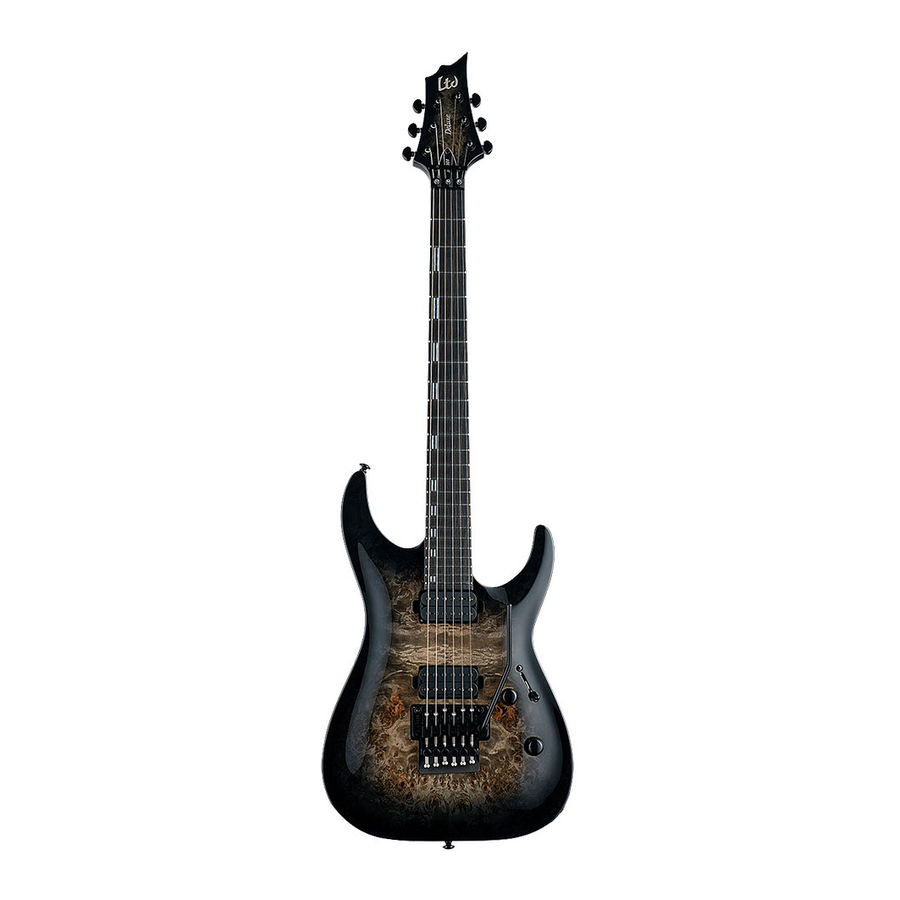
Summary of Contents for ESP AC10E
- Page 1 O W N E R ’ S M A N U A L & W A R R A N T Y I N F O R M A T I O N V E R S I O N 1 . 3...
-
Page 2: Table Of Contents
ESP instrument is inspected thoroughly by our quality control technicians prior to shipping to your local dealer. All ESP instruments are covered by our limited lifetime warranty so you can rest assured that your new instrument will bring you many years of enjoyment. -
Page 3: Guitar Anatomy
26. Battery Compartment GENERAL MAINTENANCE Your ESP instrument is built to give you many years of satisfaction. Please keep in mind that keeping your instrument functioning properly will require periodic care and maintenance. Follow the simple maintenance guidelines outlined below to make sure your instrument continues playing properly and looking its best. Note: Although your instrument has been inspected by our quality control team, ESP highly recommends that you take your guitar to a qualified repair shop for an initial setup to be performed. -
Page 4: Neck & Truss Rod
E/A/D/G/B/E NECK & TRUSS ROD E/A/D/G/B/E All ESP instruments have an adjustable truss rod located inside of the neck. The function of a truss rod is to B/E/A/D/G/B/E F#/B/E/A/D/G/B/E provide adjustment against the string tension on the neck. The following are the most common reasons why... -
Page 5: String Action
Since our instruments ship through different climates to their final destination, your guitar may need to be readjusted in order to bring it back to ESP factory specs. Other factors that affect string action include changing string gauge and/or tuning. High string action will make your guitar difficult to play, while low string action will cause excessive buzzing and unclear notes. -
Page 6: Controls & Electronics
You will need to remove the electronics backplate and hold the control from the back of the guitar while tightening the nut from the top of body. This will ensure that you do not move the controls or damage / break any of the wire connections. -
Page 7: Guitar Bridges
Balance If you have an acoustic or semi-acoustic model, your bridge is made of rosewood like a traditional acoustic bridge and the bridge is glued to the top of your guitar. Restringing an acoustic bridge is done by Master Tone inserting the ball-ends through the back of the bridge and feeding the strings over the top of the saddle, or inserting the ball-ends through the top of the bridge and holding them in place with the bridge pins. -
Page 8: Changing Strings
“whammy bar”. On ESP guitars, this bridge is almost always installed with a recess route in the body, allowing the bridge to rest lower than a traditional bridge. This also allows room for both pulling up in pitch and pushing down in pitch. This system is also referred to as a floating bridge since it does not rest against the body of the instrument. -
Page 9: Warranty Registration Card
ESP for warranty repair, ESP will replace that instrument with one of the same or most similar style of a value not in excess of the original purchase price of customer’s instrument. - Page 10 ESP assumes no liability neither for property damage resulting from failure of this product nor for any loss of income, satisfaction, or damages arising from the loss of use of same due to defects or availability of same during service.
- Page 12 ©2009 The ESP Guitar Company 10913 Vanowen Street, North Hollywood, CA 91605 PH: 800-423-8388 | FAX: 818-506-1378 www.espguitars.com...


Need help?
Do you have a question about the AC10E and is the answer not in the manual?
Questions and answers